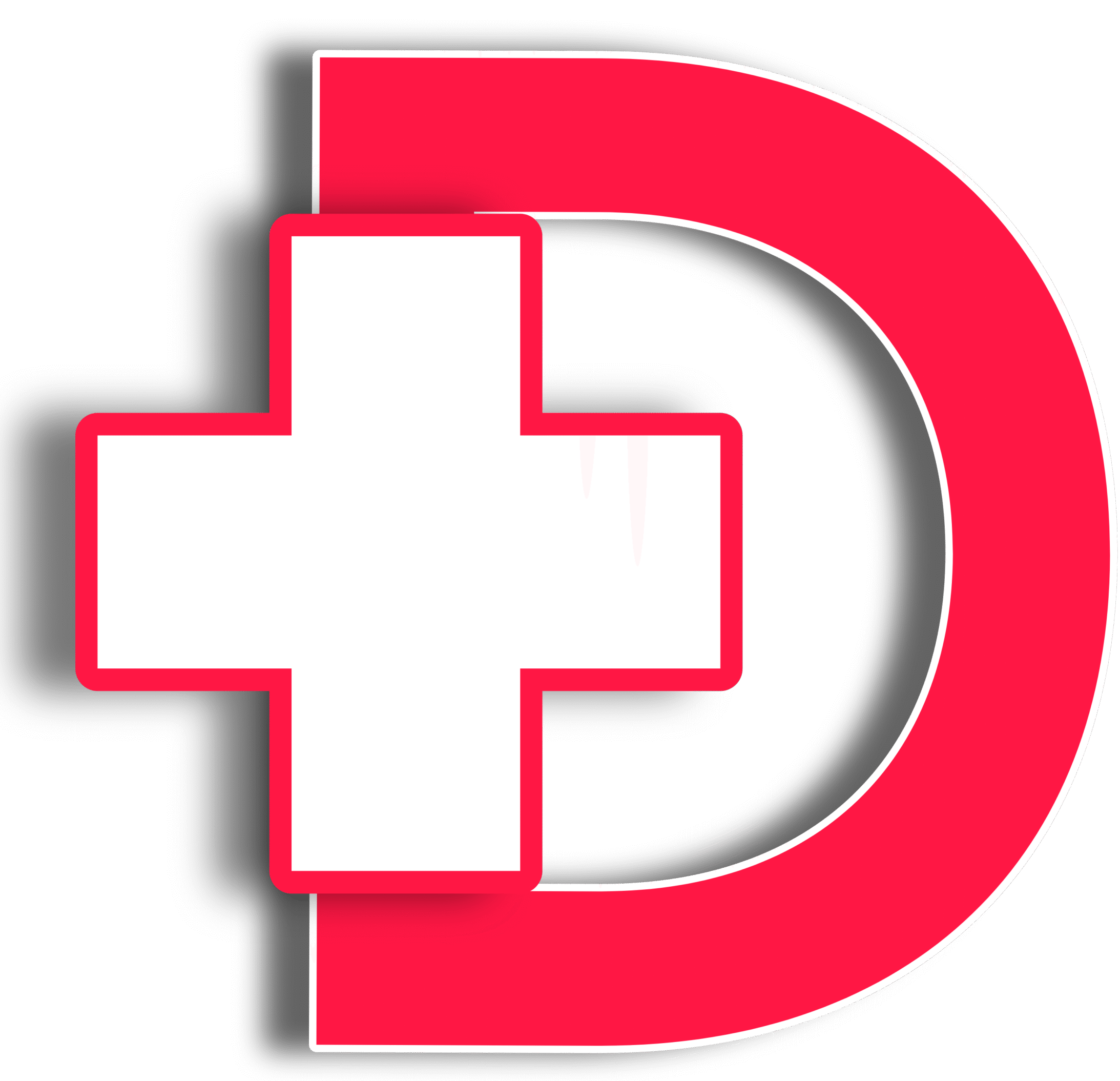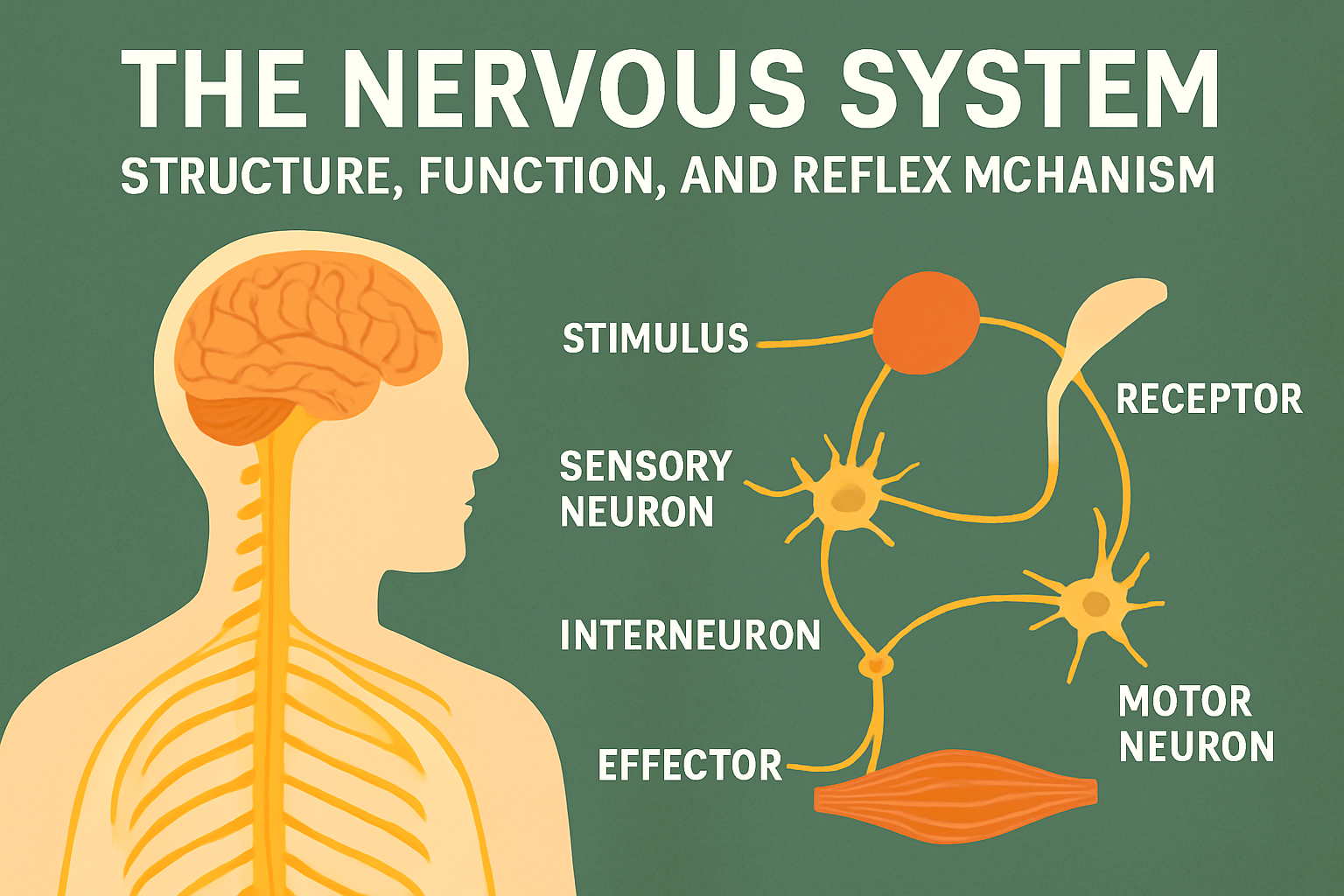The Nervous System 🧠: Structure, Function, and Reflex Mechanism
Introduction
The nervous system is one of the most complex and vital systems of the human body. It is responsible for receiving stimuli, processing information, and coordinating responses that help organisms adapt and survive. In neurology, understanding the structure and function of the nervous system is essential to explain how the brain, spinal cord, and nerves communicate with each other.
Excitability and Conductivity
Excitability and conductivity are the two main properties of living protoplasm through which all living beings react to environmental changes. The changes that stimulate living organisms are called stimuli, while the actions or reactions taken in response are known as responses.
In simple organisms such as Amoeba, the undifferentiated protoplasm itself performs both the reception and conduction of stimuli. However, in multicellular organisms, specialized receptors and effectors have evolved to perform these roles efficiently.
Neurons and the Reflex Arc
In complex organisms, the nervous system consists of a chain of receptors, neurons, and effectors, which together form a reflex arc.
- A sensory (afferent) neuron carries impulses from receptors to the central nervous system (CNS).
- A motor (efferent) neuron carries responses from the CNS to effectors like muscles or glands.
- In some cases, interneurons connect sensory and motor neurons, forming a multi-synaptic reflex arc.
The connection point between neurons is called a synapse—a microscopic gap where impulses are transmitted chemically and electrically.
Central and Peripheral Nervous Systems
The central nervous system (CNS) comprises the brain and spinal cord, while the peripheral nervous system (PNS) includes all other nerves and ganglia that connect the CNS to the rest of the body.
- Sensory neuron cells are grouped in ganglia, located outside the CNS.
- Their dendrons enter the CNS through dorsal (afferent) roots, while motor axons exit via ventral (efferent) roots.
Evolutionarily, the concentration of sensory inputs—especially from the visual and auditory organs—has led to a significant enlargement of the anterior nervous region, forming the brain, while the rest developed into the spinal cord.
Coordination and Integration of Impulses
The nervous system does more than just transmit signals; it coordinates, integrates, and synthesizes them to produce appropriate responses.
This is possible due to the dense network of synapses and neuronal connections in the CNS, allowing effective communication between different regions of the brain and spinal cord.
Typically, dendrons carry impulses toward the cell body, while axons carry them away from it — though in certain sensory neurons, dendrons may be so long that they resemble axons.
Conclusion
The nervous system is the ultimate control and coordination network of the body. It regulates everything — from involuntary reflexes to complex thought processes — through the intricate interactions of neurons, receptors, and effectors. In neurology, understanding this system lays the foundation for diagnosing and treating neurological disorders.
FAQs
Q1. What are the main parts of the nervous system?
The nervous system is divided into the central nervous system (brain and spinal cord) and the peripheral nervous system (nerves and ganglia).
Q2. What is a reflex arc?
A reflex arc is the pathway followed by nerve impulses that produce an automatic response, involving sensory neurons, interneurons, and motor neurons.
Q3. What are the main properties of nerve cells?
Nerve cells or neurons possess excitability (ability to respond to stimuli) and conductivity (ability to transmit impulses).
Q4. How does the nervous system coordinate body functions?
It coordinates body functions by integrating impulses through the brain and spinal cord and sending appropriate responses to effectors such as muscles and glands.

